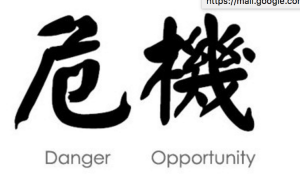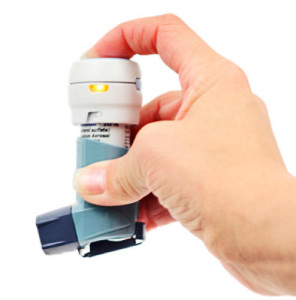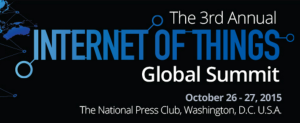Late in the process of writing my forthcoming IoT strategy book, The Future Is Smart, I happened on the “IoT Design Manifesto 1.0” site. I wish I’d found it earlier so I could have featured it more prominently in the book.
The reason is that the manifesto is the product (bear in mind that the original team of participants designed it to be dynamic and iterative, so it will doubtlessly change over time) of a collaborative process involving both product designers and IoT thought leaders such as the great Rob van Kranenburg. As I’ve written ad nauseam, I think of the IoT as inherently collaborative, since sharing data rather than hoarding it can lead to synergistic benefits, and collaborative approaches such as smart cities get their strength from an evolving mishmash of individual actions that gets progressively more valuable.
From the names, I suspect most of the Manifesto’s authors are European. That’s important, since Europeans seem to be more concerned, on the whole, about IoT privacy and security than their American counterparts, witness the EU-driven “privacy by design” concept, which makes privacy a priority from the beginning of the design process.
At any rate, I was impressed that the manifesto combines both philosophical and economic priorities, and does so in a way that should maximize the benefits and minimize the problems.
I’m going to take the liberty of including the entire manifesto, with my side comments:
- “WE DON’T BELIEVE THE HYPE. We pledge to be skeptical of the cult of the new — just slapping the Internet onto a product isn’t the answer, Monetizing only through connectivity rarely guarantees sustainable commercial success.
(Comment: this is like my “just because you can do it doesn’t mean you should” warning: if making a product “smart” doesn’t add real value, why do it?)*
- “WE DESIGN USEFUL THINGS. Value comes from products that are purposeful. Our commitment is to design products that have a meaningful impact on people’s lives; IoT technologies are merely tools to enable that.
(Comment: see number 1!)
- “WE AIM FOR THE WIN-WIN-WIN. A complex web of stakeholders is forming around IoT products: from users, to businesses, and everyone in between. We design so that there is a win for everybody in this elaborate exchange.
(Comment:This is a big one in my mind, and relates to my IoT Essential Truth #2 — share data, don’t hoard it — when you share IoT data, even with competitors in some cases [think of IFTTT “recipes”] — you can create services that benefit customers, companies, and even the greater good, such as reducing global warming).
- WE KEEP EVERYONE AND EVERYTHING SECURE. With connectivity comes the potential for external security threats executed through the product itself, which comes with serious consequences. We are committed to protecting our users from these dangers, whatever they may be.
(Comment: Amen! as I’ve written ad nauseum, protecting privacy and security must be THE highest IoT priority — see next post below!).- WE BUILD AND PROMOTE A CULTURE OF PRIVACY. Equally severe threats can also come from within. Trust is violated when personal information gathered by the product is handled carelessly. We build and promote a culture of integrity where the norm is to handle data with care.
(Comment:See 4!).- WE ARE DELIBERATE ABOUT WHAT DATA WE COLLECT. This is not the business of hoarding data; we only collect data that serves the utility of the product and service. Therefore, identifying what those data points are must be conscientious and deliberate.
(Comment: this is a delicate issue, because you may find data that wasn’t originally valuable becomes so as new correlations and links are established. However, just collecting data willy-nilly and depositing it in an unstructured “data lake” for possible use later is asking for trouble if your security is breeched.).- WE MAKE THE PARTIES ASSOCIATED WITH AN IOT PRODUCT EXPLICIT. IoT products are uniquely connected, making the flow of information among stakeholders open and fluid. This results in a complex, ambiguous, and invisible network. Our responsibility is to make the dynamics among those parties more visible and understandable to everyone.
(Comment: see what I wrote in the last post, where I recommended companies spell out their privacy and usage policies in plain language and completely).- WE EMPOWER USERS TO BE THE MASTERS OF THEIR OWN DOMAIN. Users often do not have control over their role within the network of stakeholders surrounding an IoT product. We believe that users should be empowered to set the boundaries of how their data is accessed and how they are engaged with via the product.
(Comment: consistent with prior points, make sure that any permissions are explicit and opt-in rather than opt-out to protect users — and yourself (rather avoid lawsuits? Thought so…)- WE DESIGN THINGS FOR THEIR LIFETIME. Currently physical products and digital services tend to be built to have different lifespans. In an IoT product features are codependent, so lifespans need to be aligned. We design products and their services to be bound as a single, durable entity.
(Comment: consistent with the emerging circular economy concept, this can be a win-win-win for you, your customer and the environment. Products that don’t become obsolete quickly but can be upgraded either by hardware or software will delight customers and build their loyalty [remember that if you continue to meet their needs and desires, there’s less incentive for customers to check out competitors and possibly be wooed away!). Products that you enhance over time and particularly those you market as services instead of sell will also stay out of landfills and reduce your pduction costs.
- IN THE END, WE ARE HUMAN BEINGS. Design is an impactful act. With our work, we have the power to affect relationships between people and technology, as well as among people. We don’t use this influence to only make profits or create robot overlords; instead, it is our responsibility to use design to help people, communities, and societies thrive.
Comment: yea designers!!)I’ve personally signed onto the Manifesto, and do hope to contribute in the future (would like something explicit about the environment in it, but who knows) and urge you to do the same. More important, why start from scratch to come up with your own product design guidelines, when you can capitalize on the hard work that’s gone into the Manifesto as a starting point and modify it for your own unique needs?
*BTW: I was contemptuous of the first IoT electric toothbrush I wrote about, but since talked to a leader in the field who convinced me that it could actually revolutionize the practice of dentistry for the better by providing objective proof that patient had brushed frequently and correctly. My bad!




